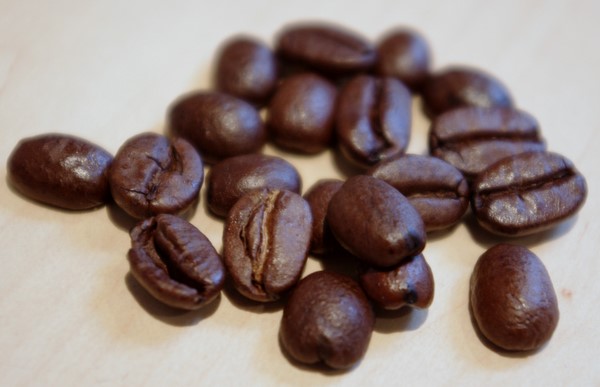|
All
about coffee
A masterclass with James Hoffmann

Although
I'm a wine geek, I'm obsessed by all kinds of flavour, and while I
don't have a great deal of knowledge of coffee, I'm interested by
it. So here are some notes from a seminar led by coffee expert James
Hoffmann (www.jimseven.com)
.
‘Coffee in this country is rubbish,’
says James, rather bluntly. ‘There are pockets of wonderfulness,
but by and large it is rubbish.’
There are three stages in the production
of coffee.
(1) Creation. ‘Everything good about coffee
is in how it is grown,’ says James. The beans are known at this
stage as cherries. ‘We want ripe cherries. Different varieties
ripen to different colours, and can be either red or yellow,’ says
James. These cherries are the size of a grape, but there is not much
fruit on them: they consist of a couple of seeds (the coffee beans)
covered in a sticky layer of fruit, which tastes of sweet honey and
melon flavours. Inside the cherry, the seeds are wrapped in a
protective layer called the parchment, and high sugar levels in the
fruit are prized.
(2)
Preservation. The majority of the journey: how much quality can be
kept? During processing, the seeds are squeezed out, and in their
sticky state they then go to a tank where the water dissolves the
sugars and pectin. The more sugar that is left on the seed, the
higher the incidence of defect, although Jim notes that some are
beginning to experiment with leaving some sugar. It is important
that there is no fermentation at this stage, just removal of sugar
and pectin.
The
seeds are laid out to dry, still in their parchment layer. Defective
seeds should be removed by hand sorting, but only a tiny percentage
of coffee goes through this sorting stage.
Coffee
spends a lot of its life doing nothing in a warehouse. Many people
think that coffee needs to rest, and that very fresh coffees have a
green note to them. Either way, preservation of quality is the key.
Jim
points out that the process of roasting the beans is a somewhat
controversial issue. ‘For me, we are trying to preserve what is
great about the coffee,’ he says. ‘The darker you roast a
coffee, the lower the acidity, but you also get more of the bitter
compounds.’ He reports that Starbucks use a dark roast, which has
the benefit of tasting the same everywhere, but which he considers
to be a bad thing.
(3)
Extraction. This is the bit that we—the consumers—get to do
ourselves. James showed the coffee brewing control chart developed
by Dr Robert Lockhart in the 1960s. In this chart, the strength of
the coffee (solubles concentration) is plotted against extraction (solubles
yield), and there is a sweet spot that should be aimed at. The
strength is the ratio of solubles to solvent, and for brewed coffee
the normal range is 1.2–1.7%. Strength is a personal preference,
but extraction is much less subjective: it must be in the range of
18–22% for the coffee to taste best.
James
demonstrated this with two coffees, both at the same strength
(1.28%). The first was an 80 g dose of coffee extracted 14.5%; the
second was a 60 g dose of coffee, extracted 19%. The first tasted
weaker and less complete, with more bitterness. Factors influencing
extraction include time, temperature, agitation and the surface area
of the coffee (it is easier to extract a finer grind).
‘Supermarket
shelf ratings indicate how bitter the coffee is,’ says James. ‘1
stands a chance of being drinkable!’ He emphasizes the need to buy
freshly-roasted beans with a date on them.
James
is no fan of espresso. ‘It’s a pig of a way to make coffee
because of the pressure. It’s only desirable because it is quick.’
Espresso is made using water under a pressure of 9 bars, which
affects the rate of extraction and also gives more of the oil
fractions. Chocolatey flavours are oil soluble, and these oils can
enhance the mouthfeel and aromatic qualities.
See
also:
 A
seminar on Chinese tea, with Edward Eisler A
seminar on Chinese tea, with Edward Eisler
Published
12/10
Find these wines with wine-searcher.com
Back
to top
|

